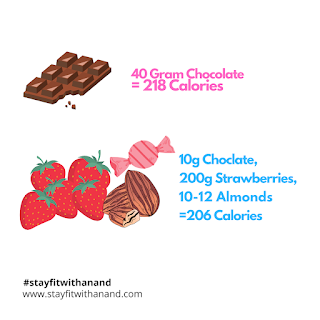I'll never understand how god-awful weight loss for women must be if I live forever. The list of challenges they encounter is so broad that it's hard to pick just a handful.
 |
| Why Is It Difficult for Women to Lose Weight? And What Can Be Done About It |
So, ladies, here we go.
Nonetheless, I came up with four reasons why losing weight is more difficult for women. Not only that, but I'll also advise you how to deal with them so you can lose weight faster.
1. Women have less muscle mass and hence burn fewer calories.
Because women have less muscle and overall body mass than males, they burn fewer calories at rest and during activity. That's why you don't receive as much food as, say, I do. To lose weight, most women will need to consume less than 2,000 calories per day. This implies you have a lower "budget" to include "fun" items like Snickers in your diet. Controlling hunger might be difficult as well. You also don't get to drink and dine out as much because, you know, too many calories.
What options do you have?
The first step is to eat a lot of food. To boost your sensation of fullness, eat more voluminous foods:
 |
| Flexible eating with Food can give good results. |
You can keep calories under control and even set aside some for "fun" meals if you consume largely whole, substantial foods. Next, begin lifting weights to grow muscle, as muscle is a metabolically active tissue that requires more energy to maintain.
One of the most beneficial things you can do for your body and health is to lift weights. So go ahead and do it. And don't worry, you won't grow big until you start putting steroids in your mouth entire like a competitive eater.
Another option is to increase NEAT. It refers to calories burnt through activities other than "formal" exercise, such as standing, walking, stair climbing, fidgeting, and so on. Get the damned steps in, in human terms.
For the most part, energy is burnt to exist (basal metabolic rate), digest food (thermic impact of food), and exercise (exercise activity thermogenesis).
However, intentionally attempting to raise your NEAT might have a significant influence on calorie expenditure. NEAT may account for as low as 15% of daily energy expenditure in inactive persons, while it can reach as high as 32% or more inactive people. So, instead of taking the elevator, climb the stairs, park your car at the farthest corner from the grocery, go for a walk, and so on. It's time to get your NEAT on. Lean individuals move a lot, and that's what they do.
No Food should be off-limit.
Whole foods should account for 80-90 percent of your diet. The rest might come from meals that aren't as healthful. Remember that 20% is only one of several options open to you. If you don't want to, you don't have to "spend" them on junk food.
2. Hormones in women might fluctuate a lot.
 |
| Hormones in women might fluctuate a lot. |
What options do you have?
- Because every woman's cycle is different, you'll have to use these suggestions depending on your own personal experience:
- For a few months, keep note of your body temperature, training capacity, mental state, desires, and hunger to get a sense of how your body reacts at different stages of the cycle.
- Once you've gathered some data, eat a little extra at times when you're hungry. Take a diet break, if necessary. Eat a reasonable amount of the sought item and be more flexible with your diet. This might aid in the management of binge eating, as well as the guilt and humiliation that typically accompany it.
- Many women are able to work out harder and set new personal records in the gym during the follicular period.
- You should rest a little and work out less strenuously during the luteal period. Walking is also beneficial.




Comments
Post a Comment